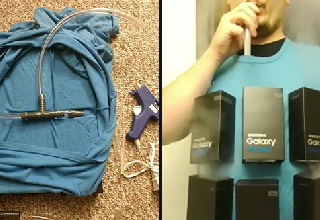Common Plumbing: 23 Things You Should Know How to Do Around the House

There are lots of people that are not giving plumbing some hesitations when it is properly working, but this is what we can all think about when something is not doing right. A basic understanding of your plumbing system and the components that will affect it will assist you to do small repairs just by yourself, to do troubleshoot, to know when to phone a plumber, and it is best to be prepared in a disaster and make informed conclusions.
1. Recognize your water source
Normally, the water comes into the house from one of the two sources: the private pump or the city water line and the residential well.
2. Test Water Quality
It’s always best to know what is in the well or the city water. Many people conducted tests when they transferred into the new place, but the experts says to test the well water no less than once yearly because much will change because of the different treatment or supply, soil shifts and also some processes utilized by the industrial or agricultural businesses in the area.
3. Locate then switch off the main water
Should your home bounce a bit of leak, you will realize knowing just right what to do and where to go to stop the water as an alternative of trying to locate it while you are panicking and the water is spewing all over.
4. Find the solo cutoff valves
Inspect all the water-using appliances like the washer, sinks and the toilets to locate the little handle on them wherein you will stop the water supply.
5. Scrutinize your water meter and your bill
When you have the city water, there’s the meter to the individual home somewhere about it or probably close by the street beneath the metal cover. Moreover, knowing where the meter of the water is and also knowing how to interpret it will assist you to monitor usage and to keep your expenses down.
6. Test the water pressure
A gauge attached to the outside water faucet will give a reading of your water pressure if you switch on the spigot.
7. Correct your water pressure
Anybody with the municipal water had the water-pressure regulator in between their house and the main water supply. Without it, a pressure would blast by all of your fixtures and appliances. To lower or raise the pressure coming in your home, you have to locate a regulator and have your partner test the pressure when you are adjusting it.
8. Check for the hidden leaks
The hidden leaks, damage the significant infrastructure in the house like wooden beams, carpet, pipes, other plumbing accessories and your drywall. You can test the system to see when it is using any water excess by checking the meter. You do not have to wait up until the problem comes. Regular checks will assist you to spot the issues early.
9. Get familiarized with the water warmer
Locate for a shutoff valve for your water, gas or electric supply on your water heater. For the gas water heater, switch the gas-supply string knob clockwise and to the electric water heater, locate for a fuse or breaker that will supply it and then turn it off.
10. Tighten or change the toilet seat
At the back of your toilet seat between a bowl and a tank are the two bolts which hold your toilet seat in its place. They typically have covered above them that matched the toilet color.
11. Replace the sink stopper
When a stopper in the bath area sink breaks or does not work at all, you can simply replace the parts or the assembly of it yourself.
12. Exchange out the shower head
You may add customization in a bathroom that creates a big difference and with a variation in the shower head. There are some that choose for a more proficient model and there are some others that want a different type of “stream,” or it can be one that can be removable for simple cleaning of a shower wall.
13. Plunge the toilet
Toilets may clog, but by using the right type of plunger or some other tools, you don’t have to worry. First, do not presume a small sink plunger can work in a toilet. You may purchase the toilet plunger that has been specially designed with the more rounded and higher hood and extended flange.
14. Change the toilet-flapper valve
When the toilet “runs,” this may be due to a flapper valve inside that had been chipped, damaged or worn out. When a seal is not tight, the water escapes a tank and it constantly attempts to fill. You may usually take out a flapper valve with the relative easiness and then take it to a home improvement store in finding the precise match replacement.
15. Unclog the sink
If the sink drains gradually or is being plugged and a traditional drain cleaner did not do its trick, you can attempt a normal solution of about half cup every vinegar and then baking soda. Combine it and downpour it slowly into a drain to witness when that helps to move it.
16. Locate sewer lines and the water
Whether you had the septic system and the well or are linked to the sewer lines and the city water, it is helpful to know where every utility line runs.
17. Know the septic system
When you have the septic system, you must know what kind you have and also where all of the components are situated. Some systems have that easy-to-find piece while there are some that can be hidden, misidentified or buried.
18. Fix the leaky faucet
There are times that the needed fix has been a new washer or o-ring that are the rubber seal that can be seen underneath a spigot base and every one of the knobs.
19. Make yourself aware of the breaker panel
Some place in your house, there is your electrical panel of many switches that is controlling the flow of your electricity to different portions of your house. It usually had the metal door and has often been located in the basement, in a closet or in a utility room.
20. Identify and end air leaks and drafts
Any air that will escape your house or enter the house will affect the effectiveness of the cooling, heating, and at times other systems. When you seal off any leak and find drafts, you can lower the house bills.
21. Master your caulk gun
The caulk makes the seal that you will need around your house in locking out the water or air. Some individuals preferred to invest in having a caulk gun instead of running out of little containers.
22. Protect against the frozen spigot
The plumber can help to install the freeze-proof spigot that basically extends into the inside of the home and then connects to your water supply where it is warm as a substitute of near a spigot where it is freezing. The job involved pipe soldering, so it is typically best to have the experts do the task.
23. Venture in the Attic
You may catch many troubles, both roof and plumbing related, early when you occasionally inspects your attic. Take that powerful, bright light and look around and up your attic for any proof of water, especially within your vents, chimney, or with any other space in the house where there are things connected or openings.






0 Comments